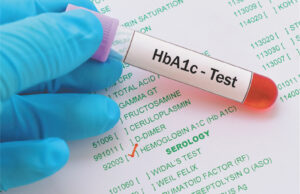By Dr. Myron Kwan, Board-Certified Internal Medicine Specialist at Millennium Physician Group
 In November, we observe American Diabetes Month to raise awareness about the disease and encourage proactive health management.
In November, we observe American Diabetes Month to raise awareness about the disease and encourage proactive health management.
Approximately 38 million people, including teens and children, have diabetes in the United States, which is about 1 in 10 people. However, it’s believed that almost 23% of those individuals are undiagnosed.
Understanding the risks and implications of diabetes is imperative because diabetes is the 8th leading cause of death in the U.S. Diabetes is also the leading cause of kidney failure, lower-limb amputations, and adult blindness. Furthermore, the medical costs for people with diabetes can double compared to those without diabetes.
So, what is diabetes, and what can you do to lower your risk? As your primary care physician at Millennium Physician Group, I’m here to guide you through this important topic and help you take steps toward better health.
Types of Diabetes
Diabetes is a chronic health condition that affects how your body processes insulin, a hormone that helps regulate blood sugar. We learn in school that our bodies use food to create energy. During that process, sugar – or glucose – is released into your bloodstream, signaling your pancreas to release insulin, allowing your cells to use sugar for energy.
With diabetes, your body either doesn’t produce enough insulin or doesn’t use insulin effectively, causing sugar to build up in your bloodstream. Over time, high blood sugar can lead to severe health complications like heart disease, kidney disease, vision loss, and an increased risk of certain cancers.
There are three main types of diabetes:
• Gestational Diabetes develops in pregnant women who have never had diabetes. Doctors typically test women around 24 to 28 weeks of pregnancy. If diagnosed, lifestyle changes or prescribed medications may be recommended to help both the mother and child. A diagnosis of gestational diabetes increases the mother’s and baby’s risk of type 2 diabetes.
• Type 1 Diabetes is an autoimmune condition where the body’s immune system mistakenly attacks insulin-producing cells in the pancreas, halting insulin production, which we all need to survive. There is no known prevention or cure for type 1 diabetes, and it is usually diagnosed in children and young adults, accounting for 5 to 10% of diabetes cases.
• Type 2 Diabetes is the most common form, impacting 90 to 95% of people with diabetes. With type 2, your body doesn’t produce enough insulin or becomes insulin resistant, which prevents blood sugar from being maintained at healthy levels. Type 2 diabetes often develops gradually over many years and is usually diagnosed in adults.
Additionally, it is possible to be diagnosed with Prediabetes. About 1 in 3 adults in the U.S. is prediabetic, meaning that their blood sugar levels are high but not high enough for a type 2 diabetes diagnosis. Unfortunately, more than 80 percent of those with prediabetes are undiagnosed, which is why it’s important to understand your risk and talk to your doctor about getting tested.
Risks & Symptoms of Type 2 Diabetes
The risk factors for prediabetes and type 2 diabetes are similar, and include:
• Family history of diabetes
• Age 45 or older
• Being overweight or having obesity
• Physically active less than 3 times a week
• Diagnosed with non-alcoholic fatty liver disease (NAFLD)
• Previously had gestational diabetes
5741 Bee Ridge Road, Suite 250
Sarasota, FL 34233
941.552.8808 | MillenniumPhysician.com









